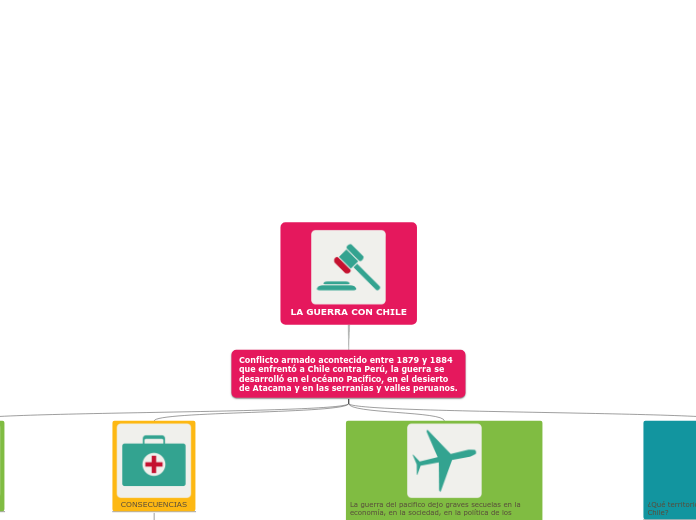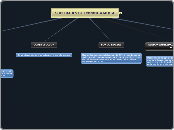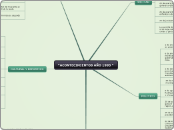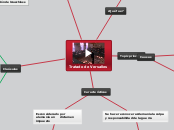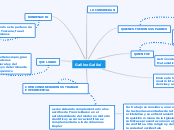LA GUERRA CON CHILE
Type in the name of the multiple-perspectives text.
Example: Bridge to Terabithia by Katherine Paterson
Conflicto armado acontecido entre 1879 y 1884 que enfrentó a Chile contra Perú, la guerra se desarrolló en el océano Pacífico, en el desierto de Atacama y en las serranías y valles peruanos.
Identify an important issue from the text that is being presented from different angles. Type it in.
Example: Jesse's drawing talent.
¿Qué territorios perdió Perú en la guerra con Chile?
Decide on the fourth point of view
Type in the name of the last character whose perspective on the issue you are going to present.
Example: Leslie Burke, Jesse's new next-door neighbor, and best friend.
Point of view
Type in a relevant quote that highlights the character's point of view. Try to follow a citation format: author's name, chapter, and page.
Example: I can't get the poetry of the trees,' he said. She nodded. Don't worry,' she said. You will someday. He believed her.' (Paterson, 4. 24)
Perú perdió los ricos territorios de Tarapaca
How is the viewpoint introduced in the story?
Choose an answer:
First person point of view - using the personal pronouns 'I' or 'we'Second person point of view - using the personal pronoun 'you'Third person point of view - using the third-person pronouns 'he', 'she' and 'they'Omniscient point of view - an all-seeing observer tells the story
La guerra del pacifico dejo graves secuelas en la economía, en la sociedad, en la política de los peruanos.
Los daños que ella ocasionó fueron inmensos e incalculables; no sólo perdimos ricos y extensos territorios, sino valiosas e irreparables vidas humanas. Todo lo que el enemigo dejó a su paso fue destrucción, muerte e inenarrables sufrimientos, cabe resaltar que Mariano Ignaciano Prado fue el que gobernaba en el Perú al producirse la guerra.
Whose character does the third point of view belong to?
Type in his/her name.
Example: Mr. Aarons, Jesse's father.
¿Quién gobernaba el Perú al producirse la guerra?
Mariano Ignacio Prado fue presidente del Perú durante los primeros ocho meses del conflicto con Chile
¿Cuál fue el argumento que empleó Chile para declararle la guerra al Perú?
What does the character think, say or do that suggests their perspective on the issue?
Type in a quote and try to maintain the citation format.
Example: 'He would like to show his drawings to his dad, but he didn't dare. (...) He'd thought his dad would be pleased. He wasn't. What are they teaching in that damn school? he had asked.' (Paterson, 2.8)
La extracción fue la causa principal del conflicto, por lo que también es conocido como “La Guerra del Guano y del Salitre”.
What kind of narration introduces the viewpoint?
Choose an answer:
First person point of view - using the personal pronouns 'I' or 'we'Second person point of view - using the personal pronoun 'you'Third person point of view - using the third-person pronouns 'he', 'she' and 'they'Omniscient point of view - an all-seeing observer tells the story
CONSECUENCIAS
Decide on the second point of view
Name the character (it can either be the main character or one of the supporting characters) whose point of view you are presenting.
Example: Miss Edmunds, Jesse's music teacher.
*La pérdida total de la riqueza del salitre.
*La destrucción de la agricultura y la industria, así como la paralización del comercio, que requirió de varios años para rehabilitarse.
*La crisis económica fiscal; la caída de la moneda y la ruina de nuestro crédito exterior
Type in a quote that points out the character's position about the issue.
Try to follow a citation format: author's name, chapter, and page.
Example: 'She said he was unusually talented, and she hoped he wouldn't let anything discourage him.' (Paterson, 2. 8)
TAMBIÉN SUCEDIO
How is the viewpoint introduced in the story?
Choose an answer:
First person point of viewSecond person point of viewThird person point of viewOmniscient point of view
*Que surgió un nuevo país fronterizo con el Perú Chile.
*Desorganizador de la clase alta peruana y de grupos dirigentes.
* Según los historiadores Jorge basadre y Margarita Guerra, la guerra llegó a imprimir en el ánimo de la población un marcado pesimismo. Este junto a la bancarrota fiscal.
CAUSAS
Decide on the first point of view you are going to present.
Type in the name of the character (it can either be the main character or one of the supporting characters) whose point of view belongs to.
Example: Jesse Oliver Aarons, Jr., the main character of the novel, a fifth-grader living in a rural Southern area.
La grave crisis financiera por la que atravesaba Chile por lo que quiso apoderarse de las ricas Salitreras de Atacama.
Type in a relevant quote that highlights the character's point of view towards
Conflicto armado acontecido entre 1879 y 1884 que enfrentó a Chile contra Perú, la guerra se desarrolló en el océano Pacífico, en el desierto de Atacama y en las serranías y valles peruanos..
Try following a citation format: author's name, chapter, and page.
Example: 'Jesse drew the way some people drank whiskey. (...) Lord, he loved to draw. (...) When he was in first grade, he told his father that he wanted to be an artist when he grew up.' (Paterson, 2. 7)
*La pérdida total de la riqueza del salitre.
* La destrucción de la agricultura y la industria, así como la paralización del comercio, que requirió de varios años para rehabilitarse.
* La crisis económica fiscal; la caída de la moneda y la ruina de nuestro crédito exterior.
* La firma de un humillante tratado de paz, el Tratado de Ancón, que ponía fin a tan desastrosa guerra.
What type of narration introduces the viewpoint?
Choose an answer:
First person point of view - using the personal pronouns 'I' or 'we'Second person point of view - using the personal pronoun 'you'Third person point of view - using the third-person pronouns 'he', 'she' and 'they'Omniscient point of view - an all-seeing observer tells the story
